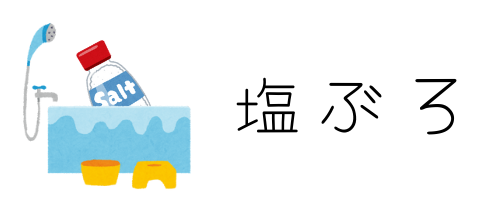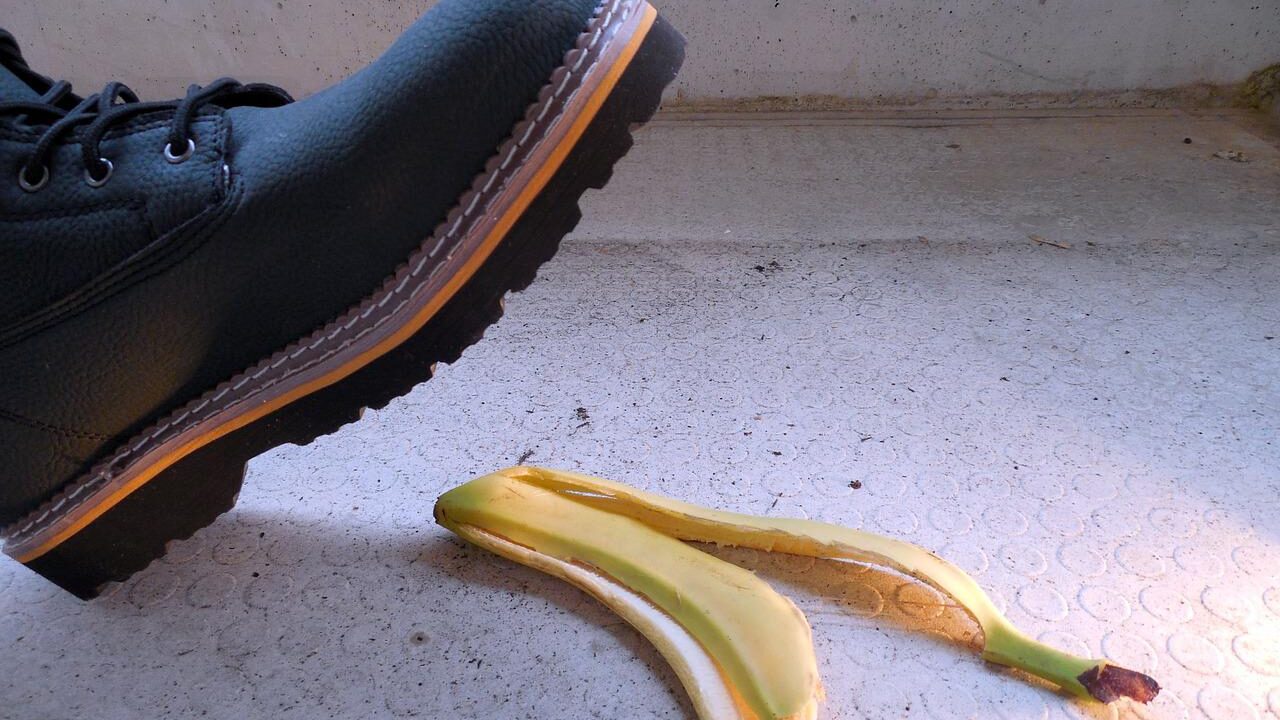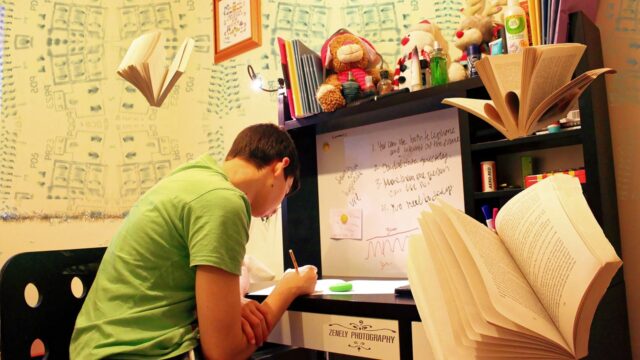ライフハックとしてではなく、英語学習にも極めて有用なのが、著名人が10分程度のプレゼンを行うTEDです。
TED Talksとは、あらゆる分野のエキスパートたちによるプレゼンテーションを無料で視聴できる動画配信サービスのことです。10年ほど前にサービスが開始されてから、政治、心理学、経済、日常生活などの幅広いコンテンツが視聴できることから人気を集めています。
RareJob English Lab
TEDは4000を超える膨大な数の動画があります。しかし慣れないうちは、動画の探し方や視聴のコツが分かりませんよね。この記事では、数多くのTEDを見てきた管理人(塩@saltandshio)が、心を揺さぶられたトークをあらすじと一緒にご紹介します。
ビジネス英会話を効率よく身につけたい方におすすめスクール
シェーン英会話
シェーンは1977年の創業以来、ネイティブ講師が英語を英語で教える「直接教授法」を採用しています。首都圏におけるスクール拠点数は、ネイティブ講師の英会話スクールでNo.1。駅から近いスクールが多いので通いやすく時間を有効に使えます。
スピークバディ パーソナルコーチング
1日1時間の短期集中トレーニングで、あなたの英語力向上をコーチが全力でサポートします。あなたの英語の世界が、劇的に変わります。
ティナ・シーリグ: 運を良くするための少しのリスク
ほとんどの場合、運は落雷のような例外的で劇的なものではありません。どちらかというと、常に吹いている風のようなものです。運気をもっと取り込むのは難しくはありませんが、分かりにくいものです。スタンフォード大学工学部教授であるティナ・シーリグが、運が良くなり、チャンスを見付けて掴み取る力を高められる意外な3つの方法を教えてくれます(約12分)。
[PR]無料体験レッスン実施中!全国208校、創業40年の老舗英会話スクール【シェーン英会話】『運』とはなにか
運とは何でしょう? 以前、芸能界最強の占い師・ゲッターズ飯田さんのことを取り上げた時にも、運についてお話しました。

運は偶然起きたように見える、“成功や失敗”と定義されています。ティナ・シーリグは、この「見える」という言葉が重要だといいます。運は偶然のことのように見えます。なぜなら、幸運へと後押ししてくれるものなんて滅多にお目にかからないからです。
ですが、長い間“運”を観察してきたティナ・シーリグはあることに気が付きます。それは、運は落雷のように例外的で劇的なものではないということです。どちらかといえば、常に吹いている風のようなもので、かつ、時には穏やかで、時には突風のように吹き抜ける、とてもきまぐれな風。それが“運”というものであるというのです。
ただし、運の風は時に想像しなかった方向から吹いてきます。では、この運の風をつかむためにはどのようなことをすればいいのでしょう。ティナ・シーリグは、その方法をトークの中で3つ紹介しています。順番に見ていきましょう。
[PR]まずは無料カウンセリング”続けるため”の オンライン英語コーチ「スピークバディ パーソナルコーチング」運の風をつかむ方法(1) コンフォートゾーン(安心領域)の 外に出て少しリスクをとる
まず、ティナ・シーリグは運の風をつかむ方法として、
- 自分自身との関係を見直すこと
- コンフォートゾーンから外に出て小さなリスクをとること
の2点をあげています。
子供を例にするとわかりやすいでしょう。子供たちは、赤ちゃんの頃にはまず起き上がるというリスク、そしてハイハイから立ち上がるというリスク、さらに親の手を離れて知らない人の中(幼稚園、または小学校)に入るというリスク、加えて自転車をこぐというリスク……などなど、様々なリスクを乗り越えて新しい世界に踏み込んでいきます。
私たちも昔はそんな子供の一人でした。幼い頃はチャレンジャーだった私たちですが、気が付くといまはリスクを避けて安全圏から出ない生活を選ぶようになっています。
学生たちもまたしかりです。ティナ・シーリグは自身の授業で、まず生徒たちに自分のリスクの基準を書き出させることから始めます。彼らに、自分が取ってもよいと思うリスクを書き出させるのです。
学生たちが書き出したリスク一覧は、実に多種多様です。知的なリスクもあれば、肉体的なリスク、金銭的なリスク、感情的なリスク、社会的なリスク、倫理的なリスク、政治的リスクなど、リスクを取るといっても単純に二択では答えられないものばかりです。
リスク一覧を集めたあと、つぎにティナ・シーリグはそれをどうやったら乗り越えられるか、つまりコンフォートゾーンから出られるかということを、学生たちと励まし合いながら話し合います。
知的リスクをとって今まで挑戦したことのない問題に取り組む。社会的リスクをとり電車で隣の席の人に話しかけてみる。感情的リスクをとり本当に大切な人に対して自分の思いを伝えてみる。問題が異なれば、リスクの対応も様々です。つまり、リスクの対応策はひとつではないということです。リスクという言葉がピンと来ないなら、壁を乗り越えるというとわかりやすいかもしれません。
実際に、ティナ・シーリグもこのリスクを取る方法を実践しています。彼女は、朝早い飛行機に乗った際に、席で眠るのではなく隣の人に話しかけるというリスクをとったのです。すると、隣に座っていた男性は出版社に勤めていました。このことが、彼女の人生を変えて行くのです。
[PR]検定試験合格者累計140万人!スマホ対応☆国家資格ほか資格取得ならSMART合格対策講座運の風をつかむ方法(2) 感謝の気持ちを伝える
ティナ・シーリグは自身もリスクを取り、飛行機でたまたま隣り合った男性と会話を始めました。すると、彼はマークという名前で出版社に勤めており、出版業界の今後を聞いたりするなどして結果としてとてもすばらしい時間を過ごすことになります。
会話が盛り上がったところで、ティナ・シーリグはもうひとつリスクを取ります。ノートパソコンを開けて、本の執筆アイデアを持ちかけるのです。結果的に、その内容がマークの出版社向きではないということで断られてしまいますが、彼はティナ・シーリグの執筆アイデアをとても真剣に読んでくれました。その後、二人は連絡先を交換してわかれます。
数か月後、ティナ・シーリグは出版社に勤めるマークに、『形の本を考案する出版の将来に関するプロジェクト』という授業を行っているので見に来ないかと連絡をいれます。これも、リスクを取っているといっていいでしょう。授業を見に来てくれたマークに、ティナ・シーリグはその後も授業の内容を録画した動画などを紹介します。
すると、とある学生のプレゼンに興味を持ち、その子と連絡が取りたいというメッセージが届くのです。自分の本が出したかったティナ・シーリグは内心傷付きますが、「OK」と返事をします。
その後、マークは同僚を数名連れて再び大学を訪れました。彼らとランチを取っていると、一人の同僚がティナ・シーリグに尋ねます。
本を書いてみようと思ったことはないんですか?
Hey, have you ever considered writing a book?
ティナ・シーリグはその言葉に、以前マークに見せたまったく同じ執筆の提案を見せます。すると、なんと2週間後には出版社と契約を結び、その本は世界中で百万部以上売れたのです。
このことを幸運だという人もいるでしょう。しかし、そもそものきっかけは飛行機で隣合わせた人に話しかけるというリスクを取った、ティナ・シーリグの行動なのです。その後も縁を繋ぎ続けた結果ともいえるでしょう。
そのうえで、2つ目にすべきことは他の人との関係を見直すことだとティナ・シーリグはいいます。人生の旅路の中で助けてくれる人はみんな、自分の目標達成に大きな役割を果たしていることを理解しなくてはいけません。
もし、彼らに感謝を示さないなら、きちんとやり取りを終わらせていないだけでなく、つぎの機会すら失ってしまいます。もし誰かが自分のために何かをしてくれたのなら、その人が 自分や他の人のために費やすこともできた時間(命)をもらったことになるのです。
彼らがしてくれていること、してくれたことに感謝しましょう。
ティナ・シーリグは数年間を通して、自分の人生で感謝の気持ちを本当に育むための方法を いくつか編み出しています。そのなかで、彼女自身が最も気に入っている方法は、毎日1日の終わりに予定表を見て、その日会った人々を振り返り、全ての人に感謝のメッセージを送るという方法です。
この数分間の行いによって、ティナ・シーリグは毎日の終わりに人々に強く恩を感じ、感謝の気持ちを持つといいます。そして、それは間違いなく自分の運を良くしてくれていると彼女はいいます。
[PR]知って得する、知らないと損をする!すぐに役立つ相手に合った「伝え方」のコツ!運の風をつかむ方法(3) アイデアとの関係を見直す
多くの人は、世の中に新しいアイデアが出てきた時にそれを評価をします。「それは素晴らしい考えだ」とか「ひどい考えだ」というものです。それに対して、ティナ・シーリグは単純に良いとか悪いというものではないといいます。
なぜなら、ひどいアイデアの種と思われていたものが、素晴らしい実になることがあるからです。
ティナ・シーリグは授業の中で、生徒たちに『ある問題』に対して最高のアイデアと最悪のアイデアを出してもらいます。最高のアイデアを出してもらった後、ティナ・シーリグはそれを破ってしまいます。
つぎに、各チームが他のチームがひどいと判断したアイデアを受け取ります。彼らには次に、それを素晴らしいものに変えるという課題に取り組んでもらいます。すると、なんと数分後には思いもよらない素晴らしいアイデアに変わるのです。
身近にある本当に革新的なベンチャー企業を思い浮かべてください。人々の生活を変えて、今や当たり前の存在になった企業も、最初はみんな突拍子もないアイデアから始まっています。どれもこれも、ほとんどの人が「馬鹿げている。うまくいきっこない」と言うアイデアからです。
あなたの思う最悪のアイデアが最高のアイデアを生み出すかもしれません。自分がくだらないと思っていたアイデアを、別の角度から見て掘り下げて考えてみたら、とても素晴らしいものが生み出される可能性は十分に秘めているのです。
[PR]しちだの魔法ペンなら35日でバイリンガルに!楽天4部門1位の英会話!<七田式>まとめ:運の風はいつも吹いている
いかがだったでしょうか。
時に人はひどい環境に生まれます。時に運は落雷のように素晴らしいものや、ひどいものをもたらします。しかし、運の風はいつも吹いているとティナ・シーリグはいいます。
トークのさいごに、ティナ・シーリグは会場にいる人々に語り掛けます。
しかし、運の風はいつも吹いています。もし皆さんが少しのリスクをとり、 感謝の気持ちを示すために行動する気があり、突拍子がなかろうとアイデアに可能性を見出そうとするなら、運の風を掴むより大きな帆を作れるでしょう。
But the winds of luck are always there, and if you’re willing to take some risks, if you’re willing to really go out and show appreciation and willing to really look at ideas, even if they’re crazy, through the lens of possibilities, you can build a bigger and bigger sail to catch the winds of luck.
おおきく世界を変えるために、まずは足を一歩前に踏み出してみること。それが出来れば、あなたには昨日とはまるで違う一日がおとずれることでしょう。
英語全文
I’ve spent nearly two decades observing what makes people luckier than others and trying to help people increase their luck. You see, I teach entrepreneurship, and we all know that most new ventures fail, and innovators and entrepreneurs need all the luck they can get.
<全文を読む>▼クリック▼
So how do you catch the winds of luck? It’s easy, but it’s not obvious. So I’m going to share three things with you that you can do to build a sail to capture the winds of luck. The first thing you want to do is to change your relationship with yourself. Be willing to take small risks that get you out of your comfort zone. Now, when we’re children, we do this all the time. We have to do this if we’re going to learn how to walk or talk or ride a bike or even quantum mechanics. Right? We need to go from someone one week who doesn’t ride a bike to, next week, someone who does. And this requires us to get out of our comfort zone and take some risks. The problem is, as we get older, we rarely do this. We sort of lock down the sense of who we are and don’t stretch anymore.
Now, with my students, I spend a lot of time giving them encouragement to get out of their comfort zone and take some risks. How do I do this? Well, I start out by having them fill out a risk-o-meter. Now, it’s basically a fun thing we developed in our class where they map out what risks they’re willing to take. And it becomes clear very quickly to them that risk-taking is not binary. There are intellectual risks and physical risks and financial risks and emotional risks and social risks and ethical risks and political risks. And once they do this, they compare their risk profiles with others, and they quickly realize that they’re all really different.
I then encourage them to stretch, to take some risks that get them out of their comfort zone. For example, I might ask them to do an intellectual risk and try to tackle a problem they haven’t tried before; or a social risk, talking to someone sitting next to them on the train; or an emotional risk, maybe telling someone they really care about how they feel.
I do this myself all the time. About a dozen years ago, I was on an airplane, early, early morning flight on my way to Ecuador. And normally, I would just put on my headphones and go to sleep, wake up, do some work, but I decided to take a little risk, and I started a conversation with the man sitting next to me. I introduced myself, and I learned that he was a publisher. Interesting. We ended up having a fascinating conversation. I learned all about the future of the publishing industry. So about three quarters of the way through the flight, I decided to take another risk, and I opened up my laptop and I shared with him a book proposal I put together for something I was doing in my class. And he was very polite, he read it, and he said, “You know what, Tina, this isn’t right for us, but thank you so much for sharing.” It’s OK. That risk didn’t work out. I shut my laptop. At the end of the flight, we exchanged contact information.
A couple of months later, I reached out to him, and I said, “Mark, would you like to come to my class? I’m doing a project on reinventing the book, the future of publishing.” And he said, “Great. I’d love to come.” So he came to my class. We had a great experience.
A few months later, I wrote to him again. This time, I sent him a bunch of video clips from another project my students had done. He was so intrigued by one of the projects the students had done, he thought there might be a book in it, and he wanted to meet those students.
I have to tell you, I was a little bit hurt.
I mean, he wanted to do a book with my students and not with me, but OK, it’s all right. So I invited him to come down, and he and his colleagues came to Stanford and met with the students, and afterwards, we had lunch together. And one of his editors said to me, “Hey, have you ever considered writing a book?”
I said, “Funny you should ask.” And I pulled out the exact same proposal that I had showed his boss a year earlier. Within two weeks, I had a contract, and within two years, the book had sold over a million copies around the world.
Now, you might say, “Oh, you’re so lucky.” But of course I was lucky, but that luck resulted from a series of small risks I took, starting with saying hello. And anyone can do this, no matter where you are in your life, no matter where you are in the world — even if you think you’re the most unlucky person, you can do this by taking little risks that get you out of your comfort zone. You start building a sail to capture luck.
The second thing you want to do is to change your relationship with other people. You need to understand that everyone who helps you on your journey is playing a huge role in getting you to your goals. And if you don’t show appreciation, not only are you not closing the loop, but you’re missing an opportunity. When someone does something for you, they’re taking that time that they could be spending on themselves or someone else, and you need to acknowledge what they’re doing.
Now, I run three fellowship programs at Stanford, and they are very competitive to get into, and when I send out the letters to those students who don’t get in, I always know there are going to be people who are disappointed. Some of the people who are disappointed send me notes, complaining. Some of them send notes saying what could I do to make myself more successful next time around? And every once in a while, someone sends me a note thanking me for the opportunity.
This happened about seven years ago. A young man named Brian sent me a beautiful note saying, “I know I’ve been rejected from this program twice, but I want to thank you for the opportunity. I learned so much through the process of applying.”
I was so taken by the graciousness of his message that I invited him to come and meet me. And we spent some time chatting and cooked up an idea for an independent study project together. He was on the football team at Stanford, and he decided to do a project on looking at leadership in that context. We got to know each other incredibly well through that quarter, and he took the project that he started working on in the independent study and turned it, ultimately, into a company called Play for Tomorrow, where he teaches kids from disadvantaged backgrounds how to, essentially, craft the lives they dream to live.
Now, the important thing about this story is that we both ended up catching the winds of luck as a result of his thank-you note. But it was the winds that we didn’t expect in the first place.
Over the course of the last couple of years, I’ve come up with some tactics for my own life to help me really foster appreciation. My favorite is that at the end of every single day, I look at my calendar and I review all the people I met with, and I send thank-you notes to every single person. It only takes a few minutes, but at the end of every day, I feel incredibly grateful and appreciative, and I promise you it has increased my luck.
So first, you need to take some risks and get out of your comfort zone. Second, you need to show appreciation. And third, you want to change your relationship with ideas. Most people look at new ideas that come there way and they judge them. “That’s a great idea” or “That’s a terrible idea.” But it’s actually much more nuanced. Ideas are neither good or bad. And in fact, the seeds of terrible ideas are often something truly remarkable.
One of my favorite exercises in my classes on creativity is to help students foster an attitude of looking at terrible ideas through the lens of possibilities. So I give them a challenge: to create an idea for a brand new restaurant. They have to come up with the best ideas for a new restaurant and the worst ideas for a new restaurant. So the best ideas are things like a restaurant on a mountaintop with a beautiful sunset, or a restaurant on a boat with a gorgeous view. And the terrible ideas are things like a restaurant in a garbage dump, or a restaurant with terrible service that’s really dirty, or a restaurant that serves cockroach sushi.
So they hand all the ideas to me, I read the great ideas out loud, and then I rip them up and throw them away. I then take the horrible ideas and redistribute them. Each team now has an idea that another team thought was horrible, and their challenge is to turn it into something brilliant.
Here’s what happens. Within about 10 seconds, someone says, “This is a fabulous idea.” And they have about three minutes before they pitch the idea to the class. So the restaurant in the garbage dump? What does that turn into? Well, they collect all the extra food from Michelin star restaurants that was going to get thrown out, and they have another restaurant at a much lower price, with all the leftovers. Pretty cool? Or the restaurant that’s dirty with terrible service? Well, that turns into a restaurant that’s a training ground for future restauranteurs to figure out how to avoid all the pitfalls. And the restaurant with cockroach sushi? It turns into a sushi bar with all sorts of really interesting and exotic ingredients.
If you look around at the companies, the ventures that are really innovative around you, the ones that we now take for granted that have changed our life, well, you know what? They all started out as crazy ideas. They started ideas that when they pitched to other people, most people said, “That’s crazy, it will never work.”
So, yes, sometimes people were born into terrible circumstances, and sometimes, luck is a lightning bolt that hits us with something wonderful or something terrible. But the winds of luck are always there, and if you’re willing to take some risks, if you’re willing to really go out and show appreciation and willing to really look at ideas, even if they’re crazy, through the lens of possibilities, you can build a bigger and bigger sail to catch the winds of luck.
Thank you.
<閉じる>
\ ほかにも気になるトークが満載! /








